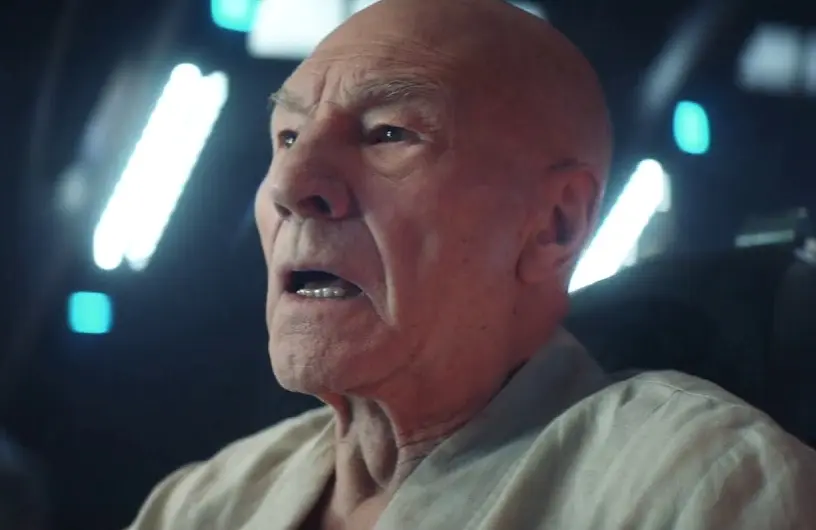Star Trek: Picard’s Season Finale Got Way Existential
-
 Patrick Stewart in Star Trek: Picard. (CBS All Access)
Patrick Stewart in Star Trek: Picard. (CBS All Access)The first episode of Star Trek: Picard introduced us to a Jean-Luc Picard who was effectively broken; a man who’d abandoned his Starfleet career and relationships. Over the course of ten episodes, it brought him back to life by helping him rediscover his old love for exploration and adventure, only to destroy him again... and then bring him back again.
We always knew what the concluding shot of the first season of Star Trek: Picard would be. From minute one of the series, it was obvious: the series would bring us home on a shot of Jean-Luc Picard’s crew (whoever it turned out to comprise) assembled on the bridge of their ship, ready to blast off into the next adventure at his directive to "engage."
That wasn’t the only thing viewers could have predicted. Given the fact that the pilot opened with Picard facing down a terminal brain disease, we had to know that sometime over the course of the season, he was likely to either confront death or find a way around it. And when the penultimate episode showed us that Dr. Altan Soong had managed to figure out how to transfer human consciousness into an artificial body, it was pretty clear that Picard was actually going to do both. But even as the episode hurtled toward the inevitable, it paused to explore human nature and mortality in an oddly beautiful way.
Shortly after his death, Picard found himself in a scene that should be familiar to nerds everywhere; it echoed, among others, Harry Potter’s famous reunion with Albus Dumbledore in the afterlife’s answer to King’s Cross. But Picard quickly became aware that he was not in the afterlife, or even purgatory, but inside a sophisticated A.I. simulation. His old friend Data, allegedly dead since the final events of Star Trek: Nemesis, is waiting for him there, but rather than welcoming him on to the next phase of existence, Data wants Picard to terminate his consciousness. Throughout Data’s life, there were many aspects of human life he strove to understand and master, but this final one — the actual fact that it ends — is the most poignant. (Yes, Star Trek has now managed to kill Data, with tear-jerking aplomb, twice.)
Naturally, when Picard wakes in his new, artificial body, his first question is whether he is now immortal, and he’s assured that Dr. Soong has already thought of that. His new body has bought him a reasonable amount of time, no more. And as he unplugs Data’s positronic consciousness and bids him a second farewell, Picard is keenly aware that he, too, will cease to be someday, and he’s doubly determined to make the most of the time he has left.
There was certainly room for improvement in the season finale. A few clever deus ex machinas, including Narek’s eleventh-hour face turn and an improbable device that apparently fixes machinery through the power of imagination, wrapped up what should have been a far more complicated final battle. And the Federation’s ban on synthetic life — arguably the inciting incident of the entire series — is apparently immediately repealed via one line of dialogue, leaving Picard free to spend season two roaming the galaxy without fear of what his new status as a synth means in a world where his existence is illegal. But the beauty and finesse with which Picard ended, and then resumed, his life, more than makes up for an excess of neatness.
After seven TV seasons and four movies, it’s hard that there was any new ground to break when it came to Jean-Luc Picard as a character, but amazingly enough, the series pulled it off. A meditation on the sheer sweetness and fragility of his finite existence — and ours — was a perfect way to tie a bow on this season, but it also couldn’t have come to us at a more appropriate time.
People are talking about Star Trek: Picard in our forums. Join the conversation.
Jessica Liese has been writing and podcasting about TV since 2012. Follow her on Twitter at @HaymakerHattie.
TOPICS: Star Trek: Picard, CBS All Access, Patrick Stewart